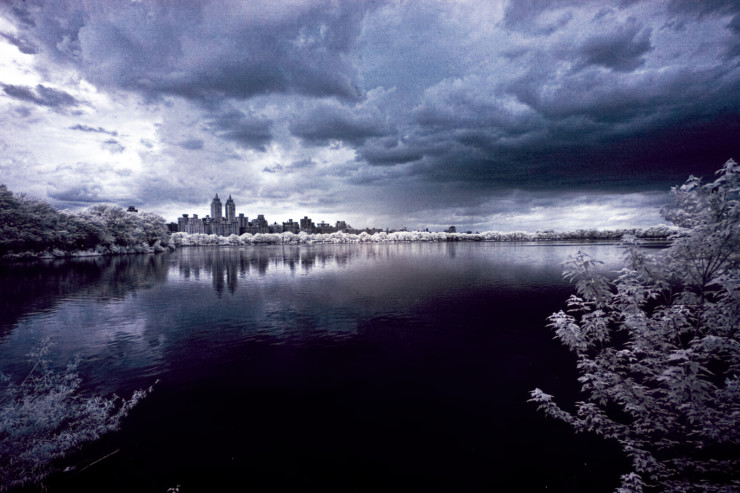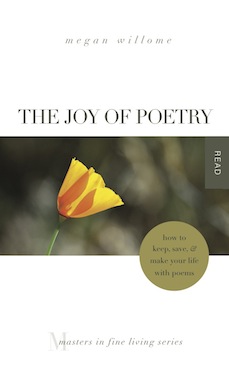I’d already chosen Henry Wadsworth Longfellow’s poem “Snow-flakes” to learn By Heart when it was featured at The Slowdown. There were no snow-flakes that day. There was not even rain.
Callie Feyen wrote a beautiful meditation on snow earlier this winter for a poetry prompt. I told her I’ve never seen a January like she described, although it’s always been my wish. It’s why I like this poem — to memorize it was to visit fairyland.
Learning “Snow-flakes” felt like learning a hymn, with its rhythmic pattern. And that’s unsurprising, considering that Longfellow wrote quite a few poems that have been set to music, including I Heard the Bells on Christmas Day.
Snow-flakes
Out of the bosom of the Air,
Out of the cloud-folds of her garments shaken,
Over the woodlands brown and bare,
Over the harvest-fields forsaken,
Silent, and soft, and slow
Descends the snow.
Even as our cloudy fancies take
Suddenly shape in some divine expression,
Even as the troubled heart doth make
In the white countenance confession,
The troubled sky reveals
The grief it feels.
This is the poem of the air,
Slowly in silent syllables recorded;
This is the secret of despair,
Long in its cloudy bosom hoarded,
Now whispered and revealed
To wood and field.
—Henry Wadsworth Longfellow
What attracted me to the poem was this line: “This is the poem of the air.” Reading it reminded me of an essay by a college classmate from the Rio Grande Valley in South Texas, who wrote about seeing snow for the first time when she traveled with the marching band to a football game in Arkansas. For her, the experience of real, live snowflakes was a poem come to life.
But Longfellow’s poem is not so exuberant. This sky is “troubled.” It feels “grief” and “despair.” The snowflakes are the air’s poem but also its dirge.
Longfellow knew grief; his first wife died after a miscarriage, and his second wife died in a fire. He was one of the first American poets to be taken seriously. He’s best known for his long narrative poems, like “The Song of Hiawatha,” “Paul Revere’s Ride” and “Evangeline.” He translated Dante’s Inferno into English — the first American to do so.
I wonder what about snow suggested concealed grief to Longfellow. I’m not someone who conceals my feelings, so his emotional repression puzzles me. But I like the idea that, for him, snow represents grief transformed.
It’s not unlike the transformation rain undergoes on its journey from the sky to the ground. I learned this from a children’s picture book by Bruce Hiscock called The Big Storm, about a storm that moved across the entire United States from March 31-April 6,1982.
Surprisingly, most raindrops start out as snowflakes. High in the cloud where the air is very cold, ice crystals gradually grow into snowflakes that are heavy enough to fall. The snowflakes then melt, if it is warm near the ground, and become raindrops.”
Like most humans, I’ve known grief. If Longfellow lived where I do, he’d only experience the full force of that emotion once a year, or even less often. Up north, he had the opportunity to let it fall and fall and fall, amid bare woodlands and forsaken fields.
Hoarding despair brings a coldness to your soul. Whispering it, revealing it, letting it descend like snow-flakes does a heart good. But now I know that when rain falls, a transformation has already occurred.
Your Turn
Did you memorize “Snow-flakes” this month? Join our By Heart community and share your audio or video using the hashtags #ByHeart and #MemoriesWithFriends and tagging us @tspoetry. We also welcome photos of your handwritten copy of the poem.
By Heart for March
For the next By Heart gathering, March 27, we’ll learn “Dippold the Optician” by Edgar Lee Masters from Spoon River Anthology by heart.
178. Dippold the Optician
WHAT do you see now?
Globes of red, yellow, purple.
Just a moment! And now?
My father and mother and sisters.
Yes! And now?
Knights at arms, beautiful women, kind faces.
Try this.
A field of grain—a city.
Very good! And now?
A young woman with angels bending over her.
A heavier lens! And now?
Many women with bright eyes and open lips.
Try this.
Just a goblet on a table.
Oh I see! Try this lens!
Just an open space—I see nothing in particular.
Well, now!
Pine trees, a lake, a summer sky.
That’s better. And now?
A book.
Read a page for me.
I can’t. My eyes are carried beyond the page.
Try this lens.
Depths of air.
Excellent! And now?
Light, just light, making everything below it a toy world.
Very well, we’ll make the glasses accordingly.
— Edgar Lee Masters
Photo by A. Strakey, Creative Commons, via Flickr. Post by Megan Willome.
Browse more By Heart
“Megan Willome’s The Joy of Poetry is not a long book, but it took me longer to read than I expected, because I kept stopping to savor poems and passages, to make note of books mentioned, and to compare Willome’s journey into poetry to my own. The book is many things. An unpretentious, funny, and poignant memoir. A defense of poetry, a response to literature that has touched her life, and a manual on how to write poetry. It’s also the story of a daughter who loses her mother to cancer. The author links these things into a narrative much like that of a novel. I loved this book. As soon as I finished, I began reading it again.”
—David Lee Garrison, author of Playing Bach in the D. C. Metro
- Perspective: The Two, The Only: Calvin and Hobbes - December 16, 2022
- Children’s Book Club: A Very Haunted Christmas - December 9, 2022
- By Heart: ‘The night is darkening round me’ by Emily Brontë - December 2, 2022


L.L. Barkat says
I’ve never thought of despair as something one might hoard. I do love the image of releasing it, as a snowflake gently from a cloud.
Such a great line: “This is the poem of the air.”
Megan Willome says
That line is the entire reason why I wanted to learn the poem By Heart. And as I did, I was surprised at what it actually said.
Will Willingham says
And this here: “The snowflakes are the air’s poem but also its dirge.” So much in that.
(As an aside, I will be needing to travel to Michigan in the next couple of months to train some adjusters, and the client sent me photos of buildings that we’ll be working with. They just took them a couple of weeks ago and so roofs and lawns and streets are covered with snow. The whole image was utterly foreign and jarring despite the fact that I have now spent all of about 3% of my life away from snow.)
Megan Willome says
It seems you’ve become acclimated.
Longfellow is good at sad poems. I read his “Cross of Snow” this week, written after his second wife died. It’s at The Writer’s Almanac, 02/27/20.